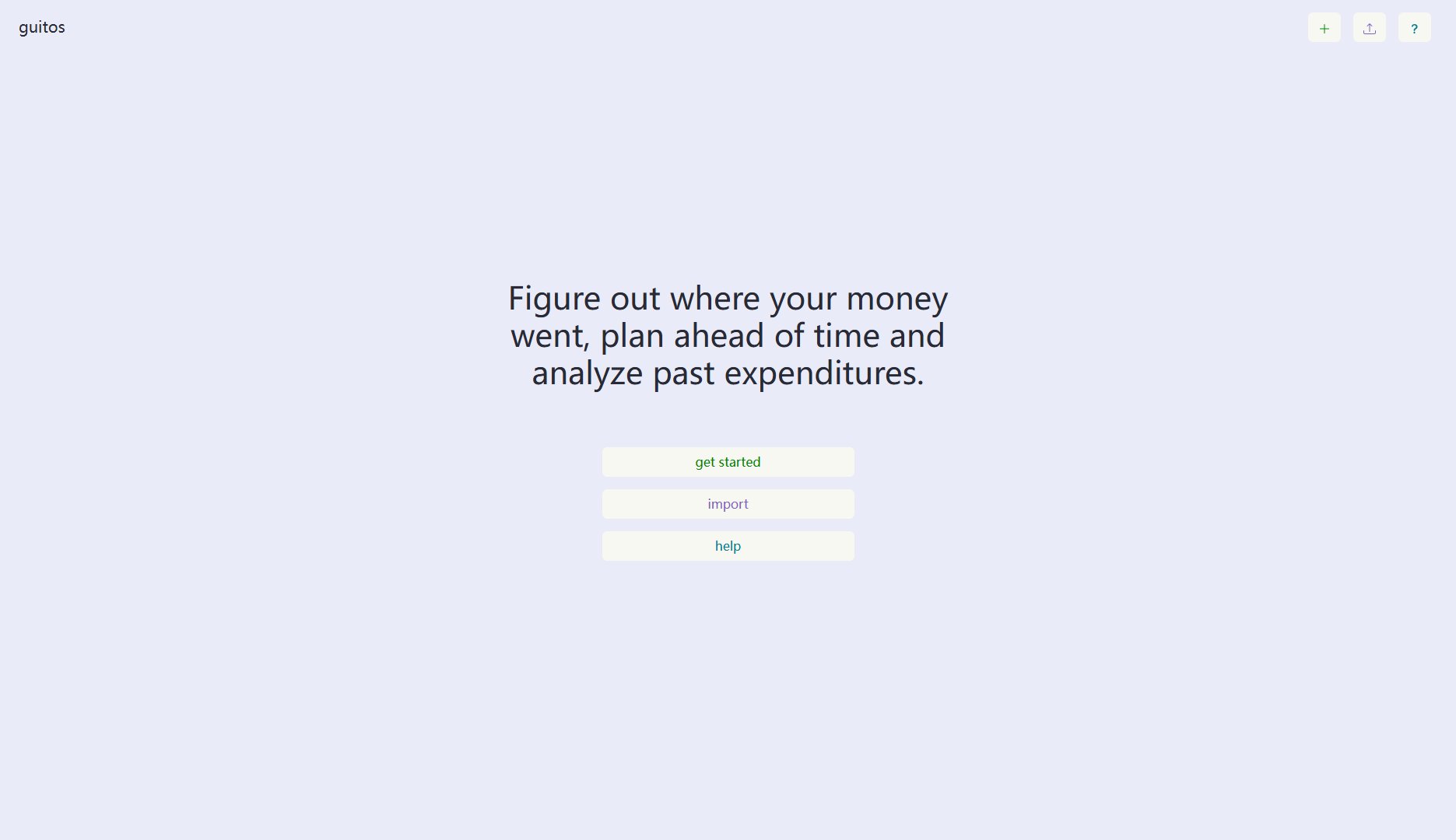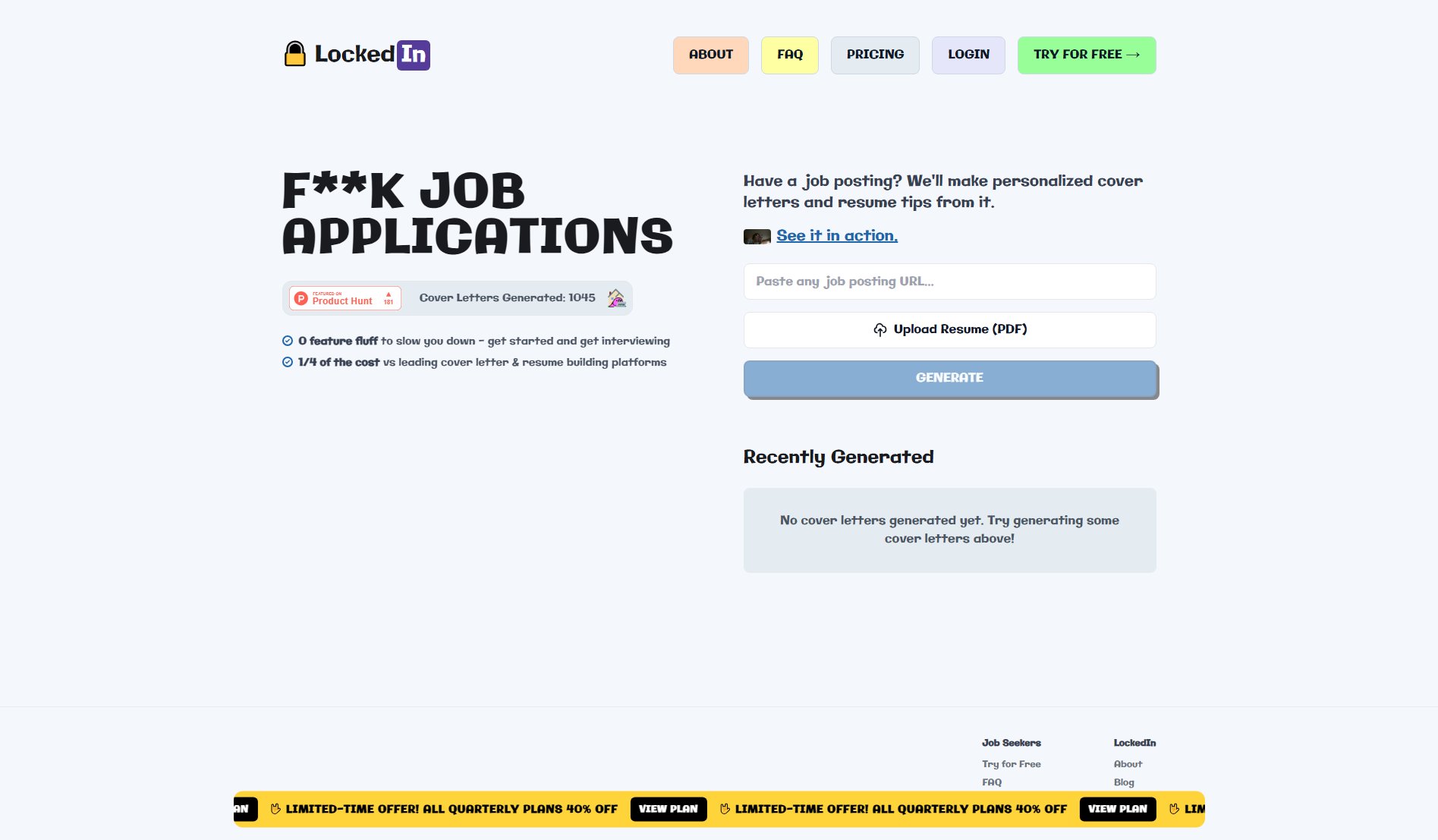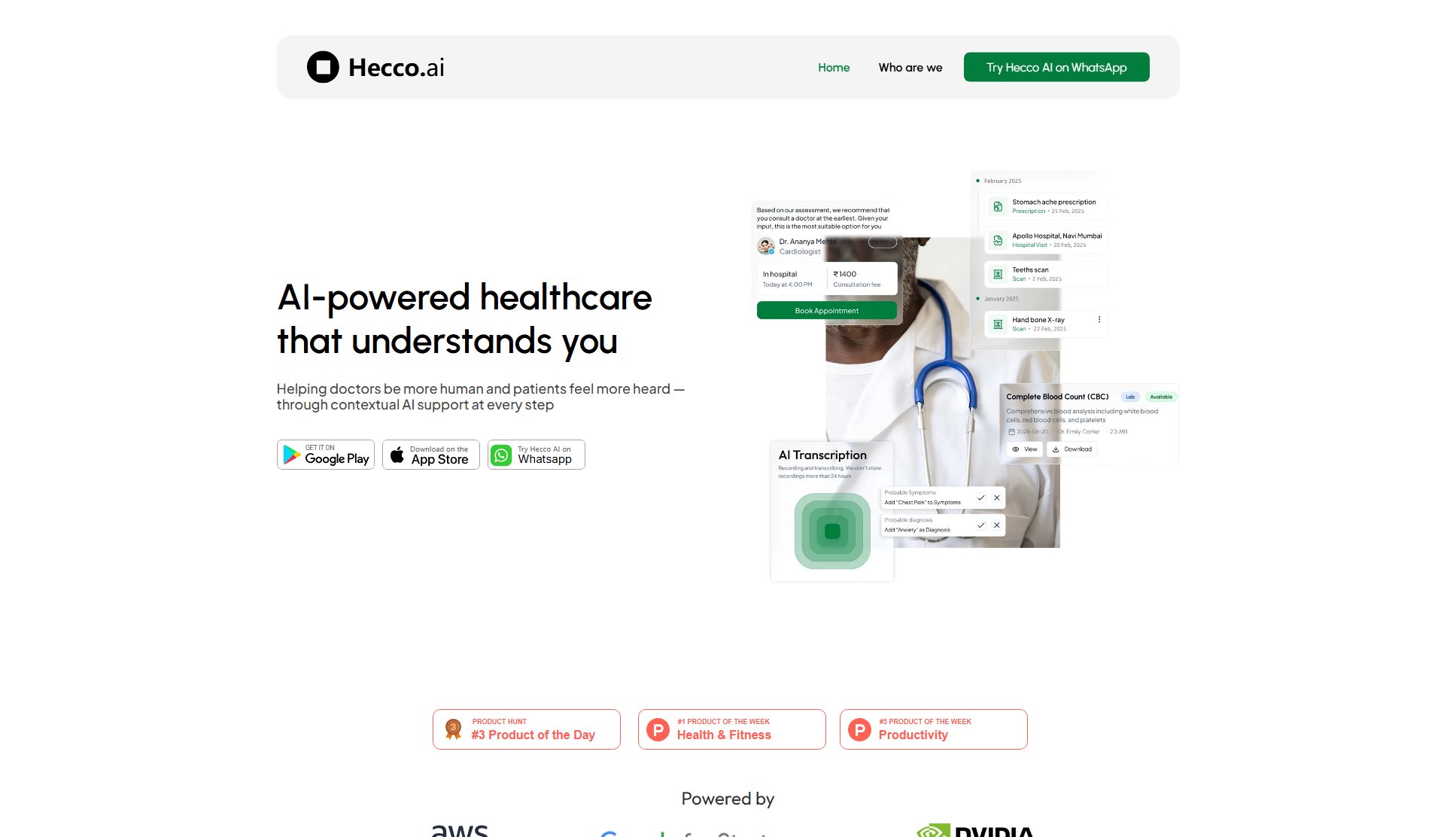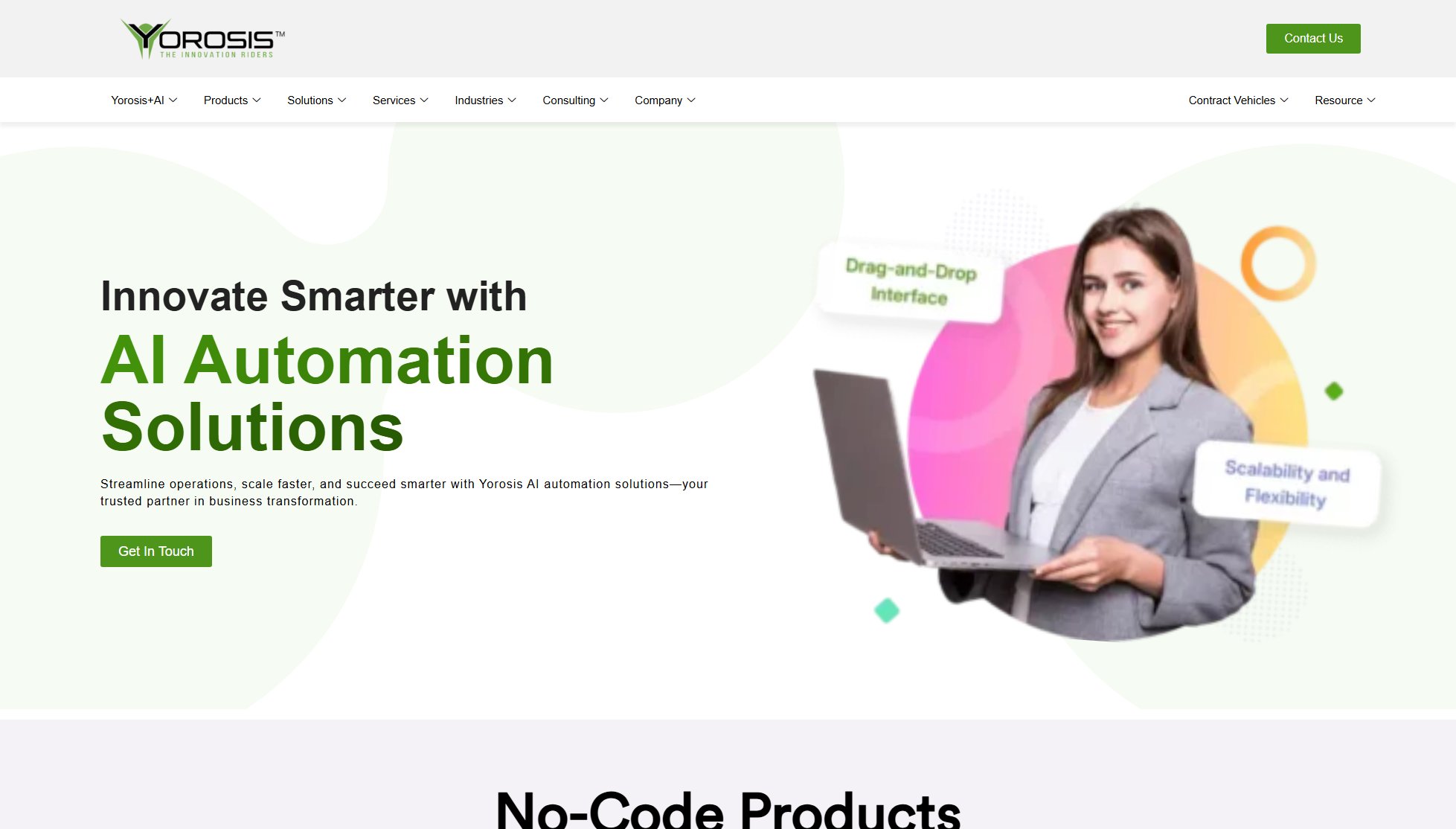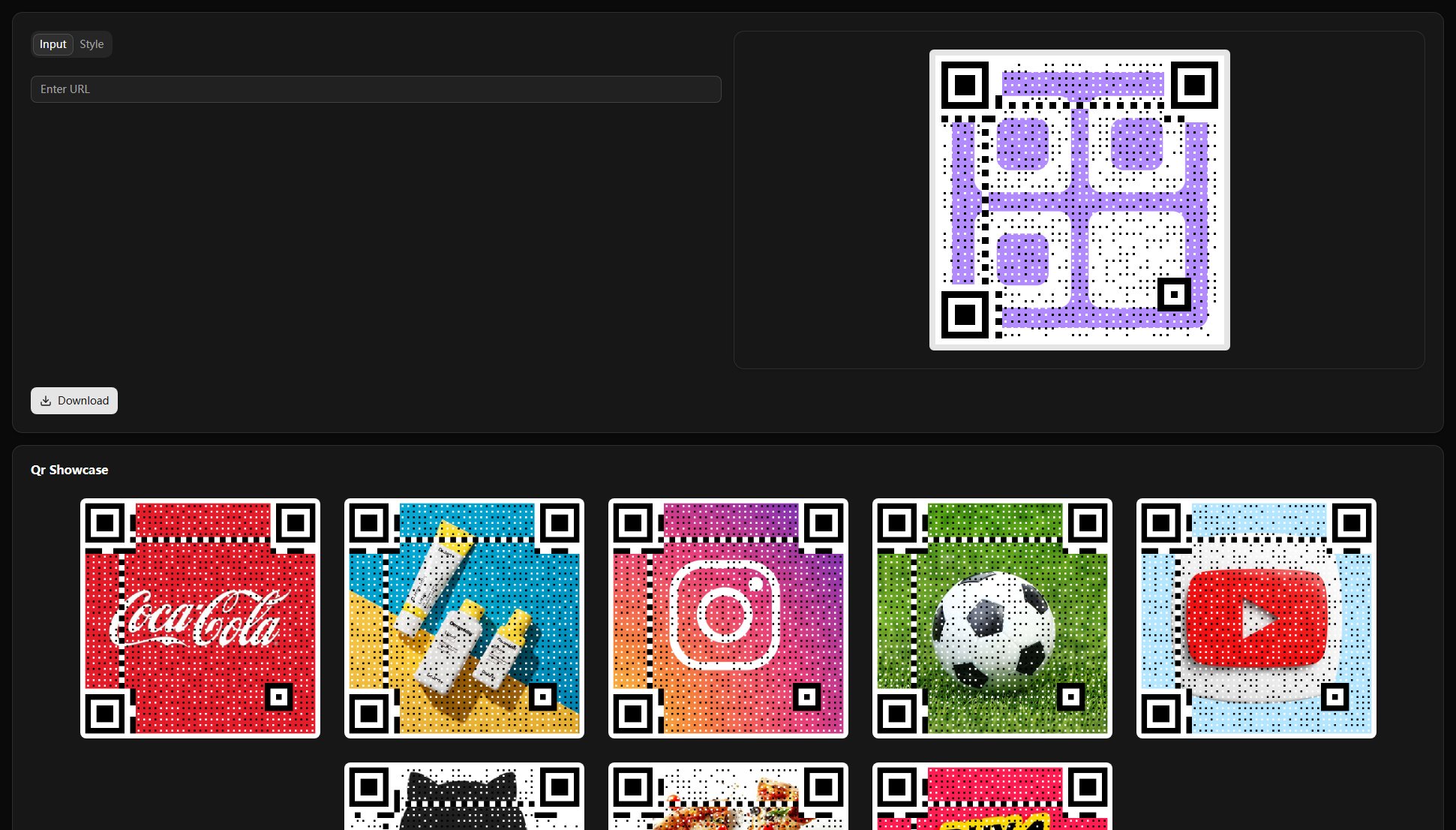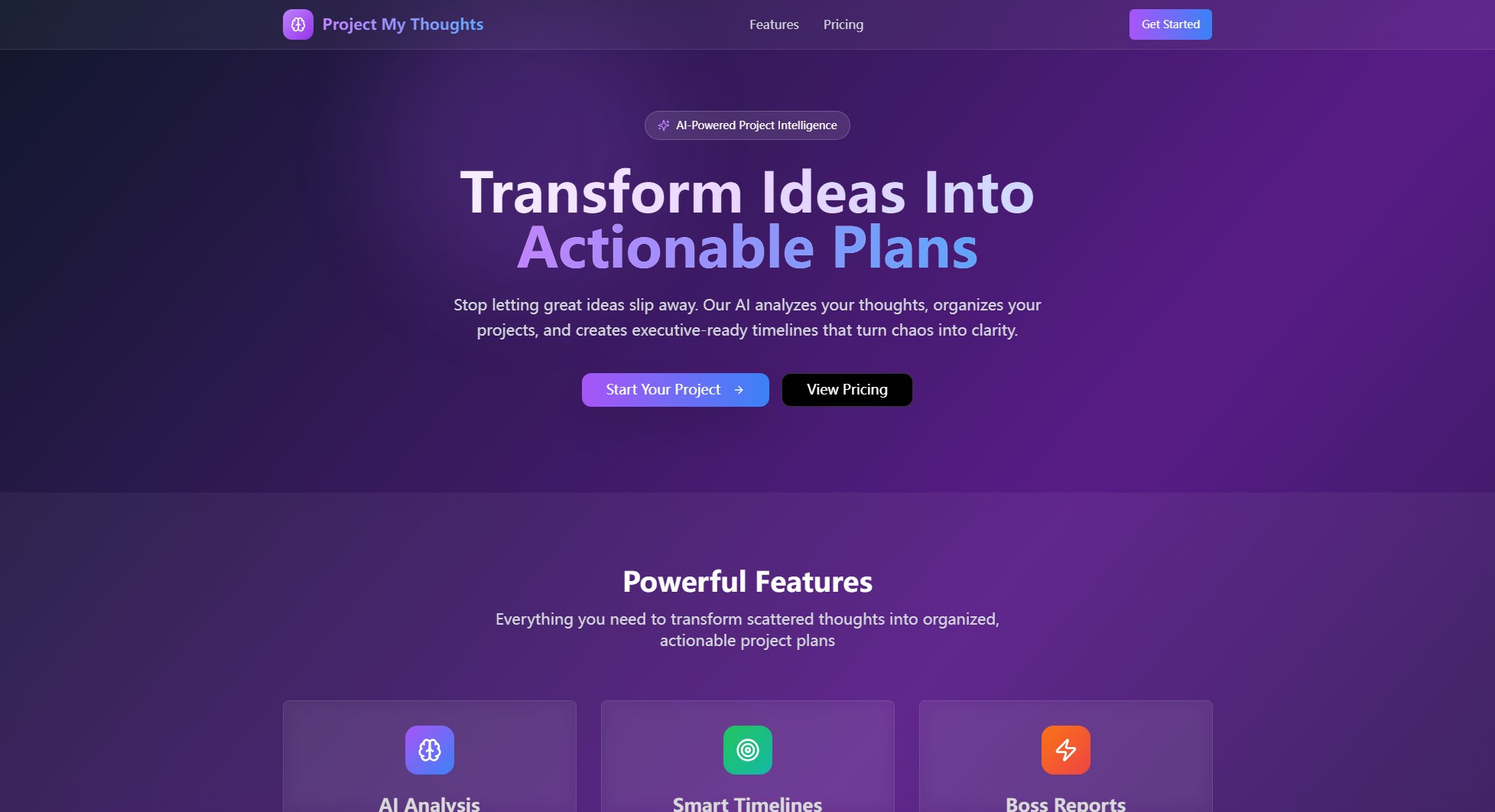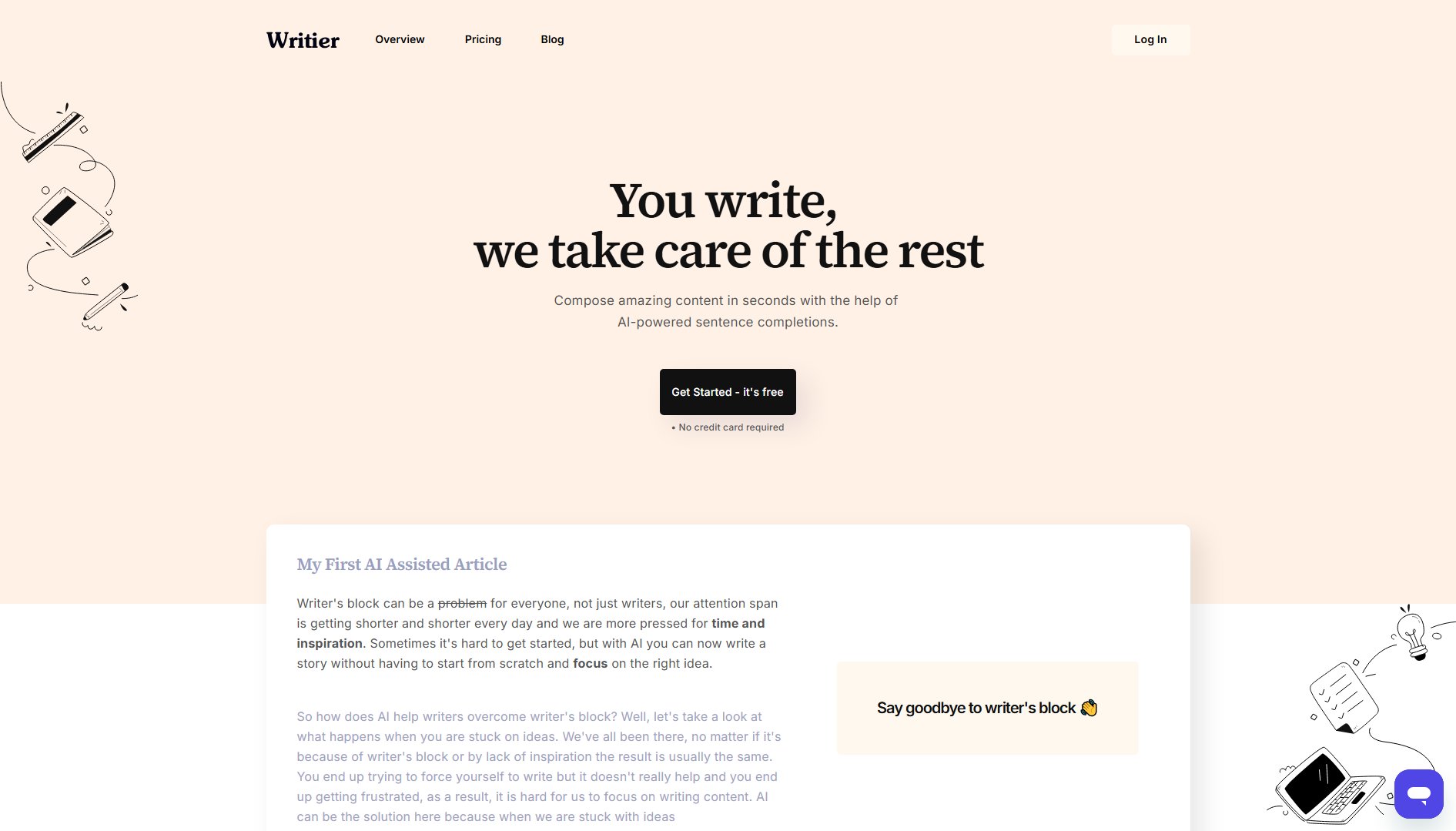Context
The modern way to automate and enhance your work with AI agents
What is Context? Complete Overview
Context is an AI-powered workspace designed to revolutionize how professionals and enterprises complete their work. It automates complex tasks across presentations, documents, spreadsheets, and websites, delivering polished, client-ready outputs in seconds. Context solves the pain points of time-consuming manual work by handling deep research, data analysis, and content creation seamlessly in the background. Its target audience includes professionals in engineering, finance, consulting, and legal fields, as well as enterprises looking to scale productivity. With Context, teams can offload busywork and focus on strategic initiatives while maintaining high-quality, on-brand deliverables.
Context Interface & Screenshots
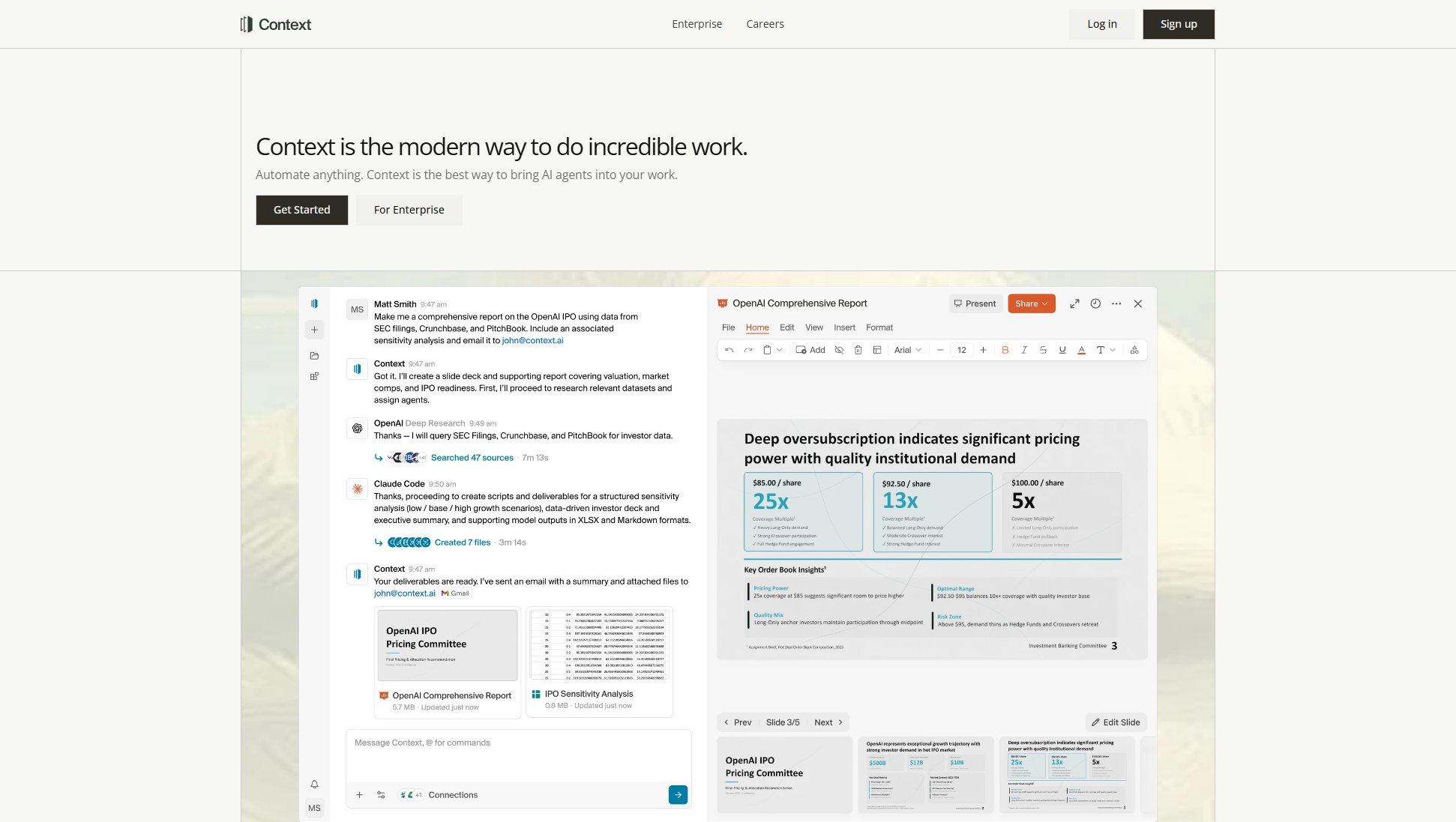
Context Official screenshot of the tool interface
What Can Context Do? Key Features
Automated Presentations
Context generates polished, tasteful presentations with narrative flow, data visualizations, and aesthetic balance. The slideshows are designed to feel handcrafted, not automated, making them ideal for client meetings, board presentations, and internal reviews.
Document Generation
Create publication-quality reports, briefs, and memos with perfect structure, tone, and referencing. Each document reads as if it was written by your team, requiring no edits before submission or publication.
Smart Spreadsheets
Transform raw data into structured, analysis-ready models with automatically generated logic, pivots, and formulas. Context builds sheets that reason like an analyst, delivering powerful insights quickly.
Website Creation
Generate live, branded websites and dashboards directly from your data, copy, or assets. Context turns ideas into dynamic online experiences without requiring coding skills.
Multi-Step Workflows
Context plans and executes complex, multi-step jobs across applications while maintaining state and permissions end-to-end. It goes beyond simple chatbots by delivering finished artifacts.
Best Context Use Cases & Applications
Engineering Team Productivity
Engineering teams use Context to generate production-grade software artifacts, code, pipelines, tests, and documentation directly from specifications and logs, reducing manual work and accelerating deployment cycles.
Financial Reporting
Finance professionals leverage Context to convert raw data exports into validated models, reconciliations, and presentation-ready reports for boards, audits, and investors, saving hundreds of hours per month.
Consulting Deliverables
Consultants use Context to synthesize notes, research, and spreadsheets into structured analyses, recommendations, and polished slide decks that are client-ready and grounded in live data.
How to Use Context: Step-by-Step Guide
Sign up for Context and connect your integrations (e.g., Google Workspace, Microsoft Office, Slack).
Define your task in natural language, such as 'Create the Q3 board deck' or 'Generate a market analysis report.'
Context will plan and execute the multi-step workflow, pulling from your connected data sources and templates.
Review the initial output as Context continues to refine it in parallel (SparkTime), allowing you to provide direction.
Receive your polished, client-ready artifact (presentation, document, spreadsheet, or website) in seconds.
Context Pros and Cons: Honest Review
Pros
Considerations
Is Context Worth It? FAQ & Reviews
Context is an AI workspace that treats Office artifacts (Slides, Sheets, Docs, email) as both output and UI. You interact in natural language, and it delivers client-ready decks, models, documents, and emails using your templates.
Unlike simple chatbots, Context plans multi-step jobs across apps, maintains state and permissions end-to-end, and delivers finished artifacts. It unifies copilots into one intelligent system that models workflow relations.
Context prioritizes precision and provenance. Artifacts aim to be on-brand, on-template, and numerically correct with traceability. The system escalates when confidence is low and asks targeted questions when needed.
Context ingests various data sources (docs, email, Slack, code) while preserving lineage and access controls. It enforces least-privilege principles and uses reference-not-mirror architecture for security.
